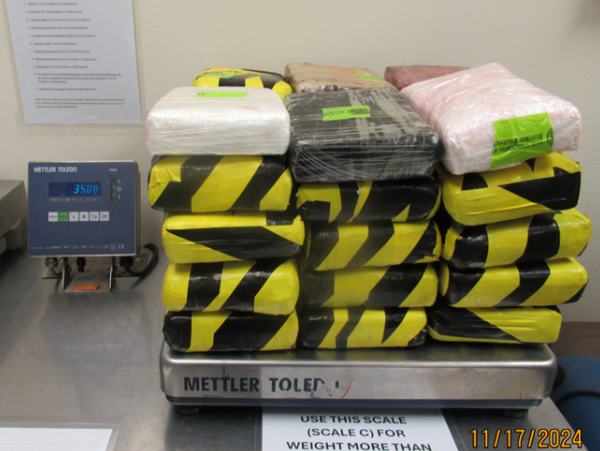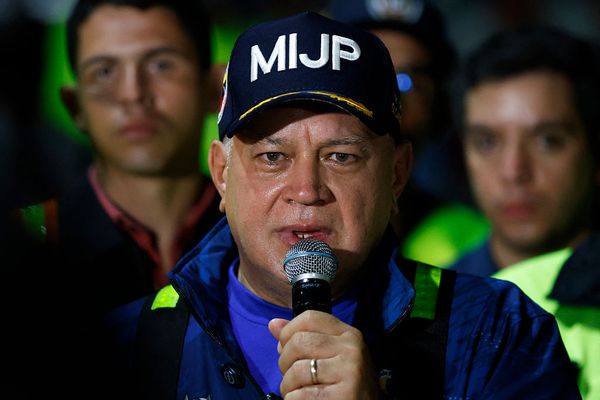The US government “remains upbeat” about the prospects for at least a ceasefire in Gaza, according to the latest reports from Washington, where the Israeli prime minister, Benjamin Netanyahu, has been meeting the US president, Donald Trump.
Netanyahu handed the US president a letter nominating him for the Nobel peace prize, saying he deserved it for “forging peace, as we speak, in one country in the region after another”. But as yet there are no signs that either Hamas or Israel have moved any closer to accepting each other’s terms.
In fact, reports emerging from the White House meeting are that the two leaders discussed the displacement of much of the Palestinian population. And a plan revealed by Israel’s defence minister, Israel Katz, proposed the contruction of a “humanitarian city” at Rafah in the north of the Gaza Strip to house more than 600,000 Palestinians.
The Conversation’s senior international affairs editor, Jonathan Este, spoke with Middle East expert, Scott Lucas, of University College Dublin to address this and other questions.
The two leaders’ discussions in Washington seemed to centre around displacement of the Palestinian population in lieu of a two-state solution. What does this tell you about the chance of a ceasefire deal?
I am fascinated – and sometimes disillusioned – by how some media outlets, led by the nose, miss the main story. Last week Donald Trump pronounced on social media that Israel had agreed to a 60-day ceasefire and Hamas “should take this deal”.
But the Netanyahu government has not accepted the framework, circulated by Trump’s envoy Steve Witkoff, let alone consented to a halt of their attacks, which have continued even as the Israeli prime minister travelled to Washington to meet the US president.
As Trump hosted Netanyahu in the White House on Monday, the line was that the US president was “upbeat on Gaza ceasefire talks”. Meanwhile, few of them seemed to notice the important development. Hamas responded to the US framework with proposals for the staged release of 28 of the remaining 50 Israeli hostages over the 60 days while Israeli troops withdrew from positions inside the Strip and humanitarian aid was restored.
But the Israeli government has thus far not given a substantive response. Instead, while pursuing a plan for the long-term military occupation of Gaza, it may also be seeking the displacement of a large portion of the more than 2.2 million population.
Sign up to receive our weekly World Affairs Briefing newsletter from The Conversation UK. Every Thursday we’ll bring you expert analysis of the big stories in international relations.
Hard-right members of Netanyahu’s cabinet, such as finance minister, Bezalel Smotrich, and internal security minister, Itamar Ben-Gvir, have long called for more than a million Gazans to be moved out of the territory. Reports over the weekend confirmed that this is not rhetoric. Israeli businessmen and venture capitalists have reportedly been working on plans for postwar Gaza, to include a “Trump riviera”, mirroring the displacement declaration by the US President, and an “Elon Musk smart manufacturing zone”.
On Tuesday, security cabinet member Ze'ev Elkin, a Netanyahu loyalist, proclaimed “a substantial chance” for a ceasefire. But Qatari negotiators have said there are currently no talks, only discussions with each side about the framework for talks.
Meanwhile, citing the killing of five Israeli soldiers in Gaza on Sunday night by an improvised explosive device, Ben-Gvir said: “We should not negotiate with those who kill our soldiers. They should be crushed to pieces, starved to death, and not resuscitated with humanitarian aid that gives them oxygen.”
He called for “a complete siege, crushing them militarily” and reiterated the plan for “encouraging [Palestinian] immigration and [Jewish] settlement — these are the keys to complete victory”.
Smotrich also called for a ban on any aid to Gaza: “In addition, I demand … that any territory that was conquered and cleansed of terror with the blood of our fighters not be abandoned.”
So I am not optimistic at the moment.
Looking at the region as a whole, two events have ‘reset’ the Middle East: the October 7 Hamas attacks and Israel’s recent 12-day war. Can you tell me more about the kaleidoscope effect these two events had?
In October 2023, there was no open-ended war in Gaza. Benjamin Netanyahu’s focus was on curbing the Palestinian Authority in the West Bank, blocking any possibility of a two-state solution. His tactic was to ease the economic pressure on Gaza and Hamas, maintaining that organisation as a balance against its West Bank rivals.
Hamas ripped up that approach with its mass murder on October 7 – the first of the two kaleidoscope moments which changed the whole picture in a matter of hours. The attack triggered the deadly Israeli response that continues 21 months later. That response did not “destroy” Hamas, as Netanyahu pledged, but it led the Israelis to take on other foes in the region.
Pursuing its “octopus doctrine”, Israel severely damaged one of the tentacles, Hezbollah, when it destroyed much of the Lebanese group’s leadership in the autumn of 2024. It assassinated senior Iranian commanders and officials in Damascus, and received a further boost when Turkish-backed factions toppled the Assad regime in December.
The 12-day war in June aimed to destroy the head of the octopus: Iran. Israel’s strikes and assassinations killed much of the country’s military leadership and many of its top nuclear scientists. The supreme leader, Ali Khamenei, hid in a bunker, only emerging on July 6. But Israel failed to topple his regime, as it had hoped.
The war was another kaleidoscope moment. Israel had its regional victory. But paradoxically, because there has been no resolution in Gaza, this has come at the cost of further international isolation. Gulf States, having moved away from “normalisation” with Israel, put out tougher statements about “genocide” of Gazans and the violation of Iranian sovereignty. Saudi Arabia’s state media highlighted a letter from Iranian foreign minister Abbas Araghchi to Saudi counterpart Faisal bin Farhan for “ways to support and enhance [relations] across all fields”.
This implies that for any normalisation to occur, Israel must end its military operation in Gaza?
That question cuts to the chase. The Gulf states, with the notable exception of Qatar, are no friends of Hamas. They might even have accepted the destruction of the group if Israel had been able to accomplish it quickly.
But there is no way that they can publicly acquiesce in the killing of almost 60,000 Gazans, the large majority of them civilians, and the humanitarian blockade that threatens every single person living in the Gaza Strip. Nor will they want to see Israel export Gazans across the region in an echo of the 1948 “Nakba” whose legacy is the millions of Palestinians living in refugee camps across the Middle East.
Netanyahu can pursue his “absolute destruction” of Hamas by pursuing the destruction and displacement of Gazans. Or he can try to capitalise on his war with Iran through links with Arab countries. He cannot do both.
Will Donald Trump get his Nobel peace prize?
I don’t know, for that is a question which does not have a logical answer.
Herny Kissinger was the US secretary of state who oversaw an escalation of the Vietnam war in which up to 3 million Vietnamese, 310,000 Cambodians, 62,000 Laotians and 58,220 US service members died. The singer-songwriter Tom Lehrer aptly noted: “Political satire became obsolete when Henry Kissinger was awarded the Nobel Peace Prize.”
We are in a world where having caused so much disorder and chaos, having enabled violence, including Israel’s open-ended war, Donald Trump may succeed in a pose as “peacemaker”.
Some may see the least worst option as flattery, which seems to work as a strategy for dealing with the US president. They may accept the White House theatre in which Netanyahu, wanted by the International Criminal Court for war crimes, personally hands Trump a peace prize nomination.
Meanwhile, in the past 24 hours, according to the Hamas-run Gaza health ministry, the number of casualties in Gaza rose to 57,575 people killed and 136,879 wounded. Twenty hostages spent another day in limbo. That’s what matters here.
This article was originally published on The Conversation. Read the original article.







